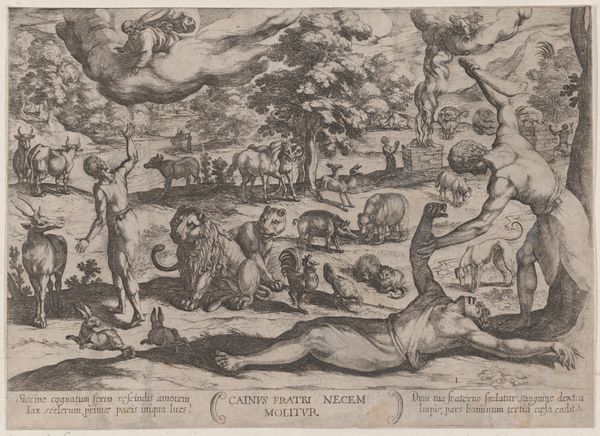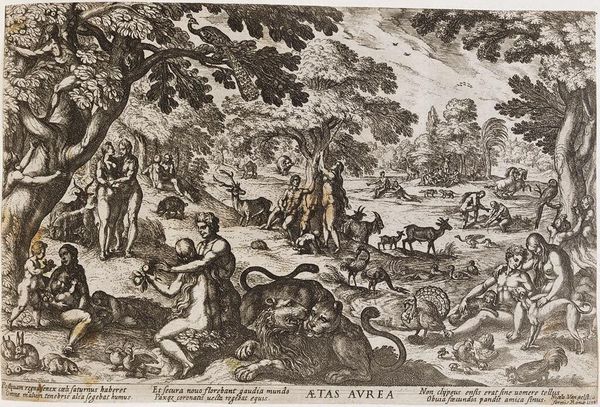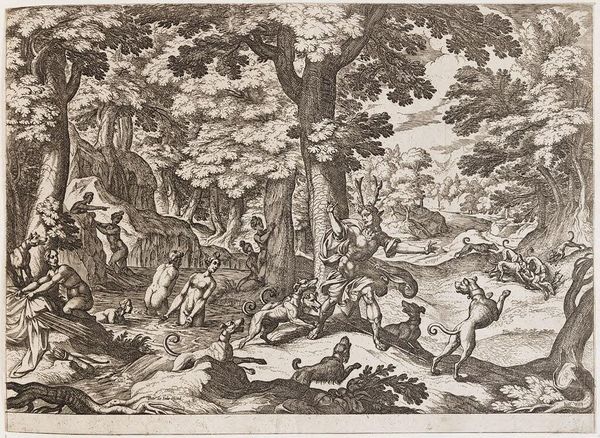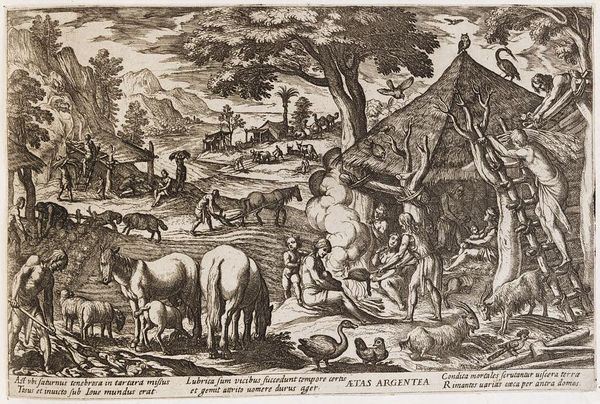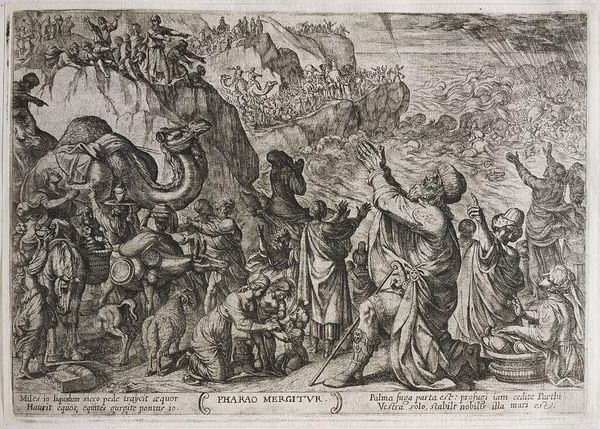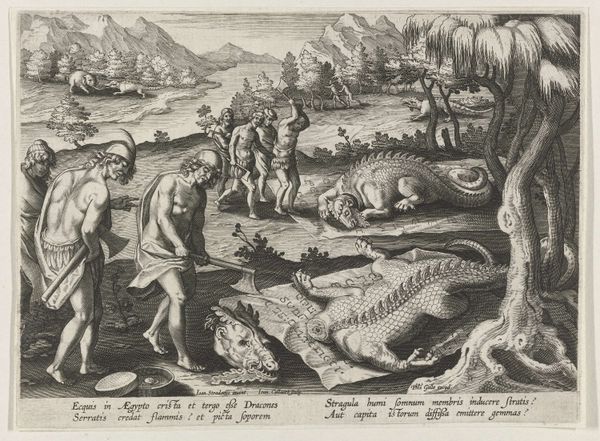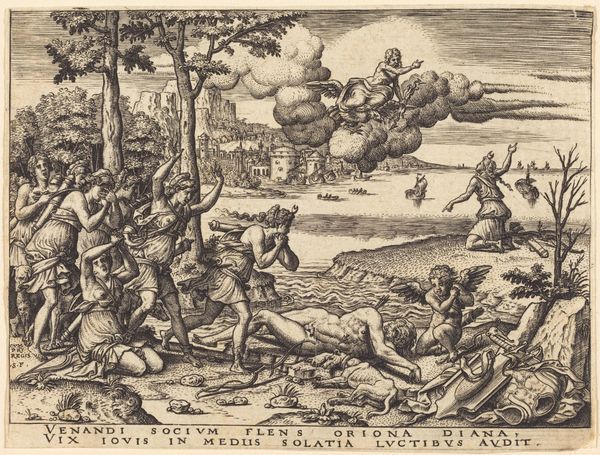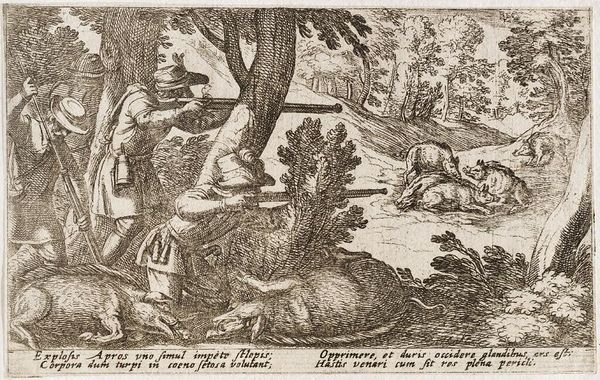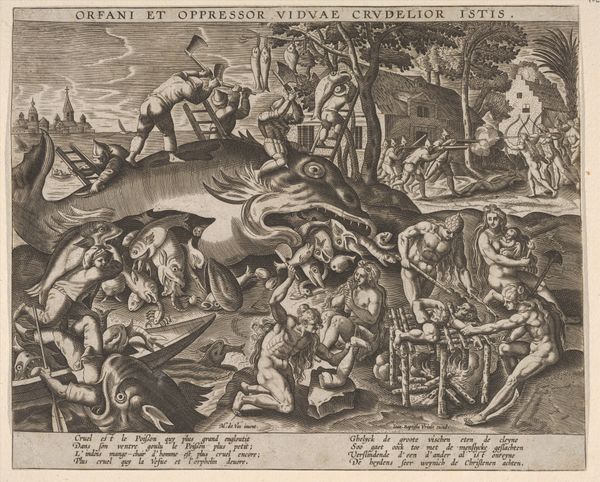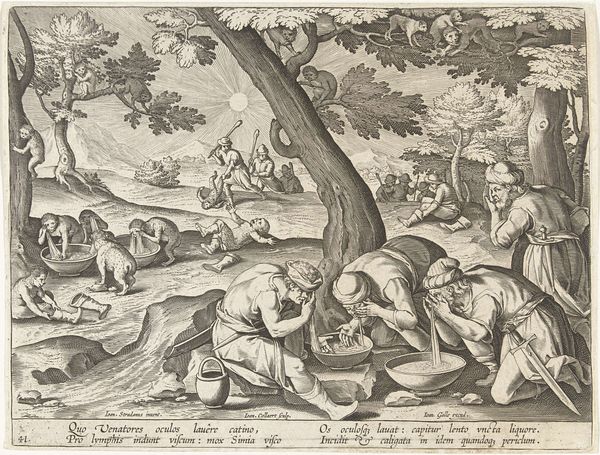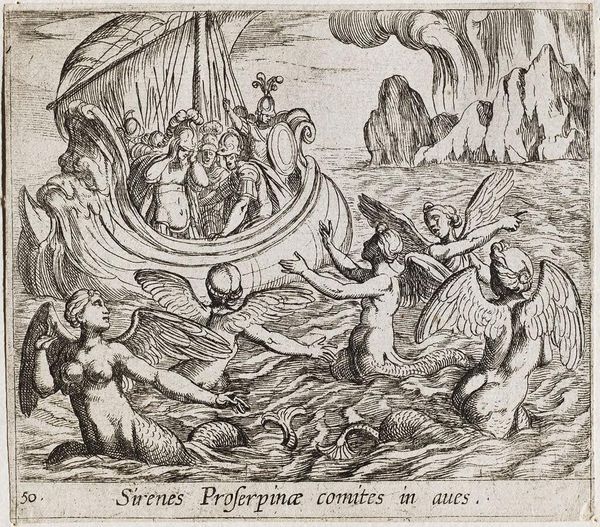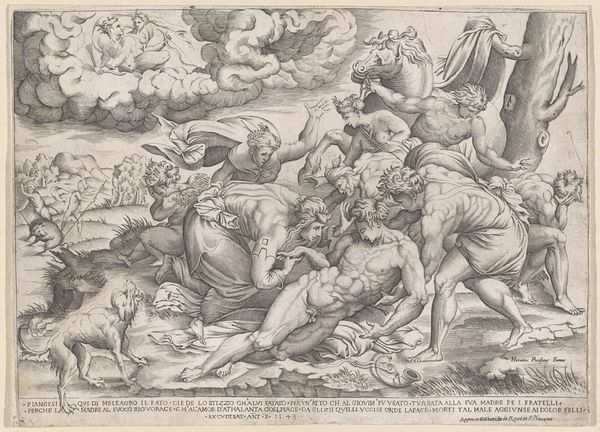
Copyright: CC0 1.0
Curator: This is Antonio Tempesta's "Cain Killing Abel," a work currently held at the Harvard Art Museums. The scene is rendered with meticulous detail, creating a chaotic yet captivating composition. Editor: My first impression is one of stark brutality, underscored by the density of the etching. The sheer number of animals witnessing the event adds a disturbing layer of voyeuristic horror. Curator: Note the dynamic interplay of figures and how the artist uses line work to create a sense of depth and movement. The materiality of the print itself lends a tactile quality to the depiction of violence. Editor: It's fascinating how Tempesta incorporates both classical and biblical symbolism. The animals may represent a prelapsarian harmony disrupted by Cain's act, echoing the loss of innocence. Curator: The means of production are crucial here. Etching allowed for the wide dissemination of this imagery, making it accessible to a broad audience and shaping perceptions of this biblical narrative. Editor: And those Latin inscriptions! They really add a textual layer to the already potent visual language, solidifying the artwork’s cultural impact and interpretation through time. Curator: Indeed. The materiality speaks to mass consumption of religious narratives. Editor: Reflecting on it, the etching feels like a stark reminder of humanity's capacity for both creation and destruction.
Comments
No comments
Be the first to comment and join the conversation on the ultimate creative platform.
